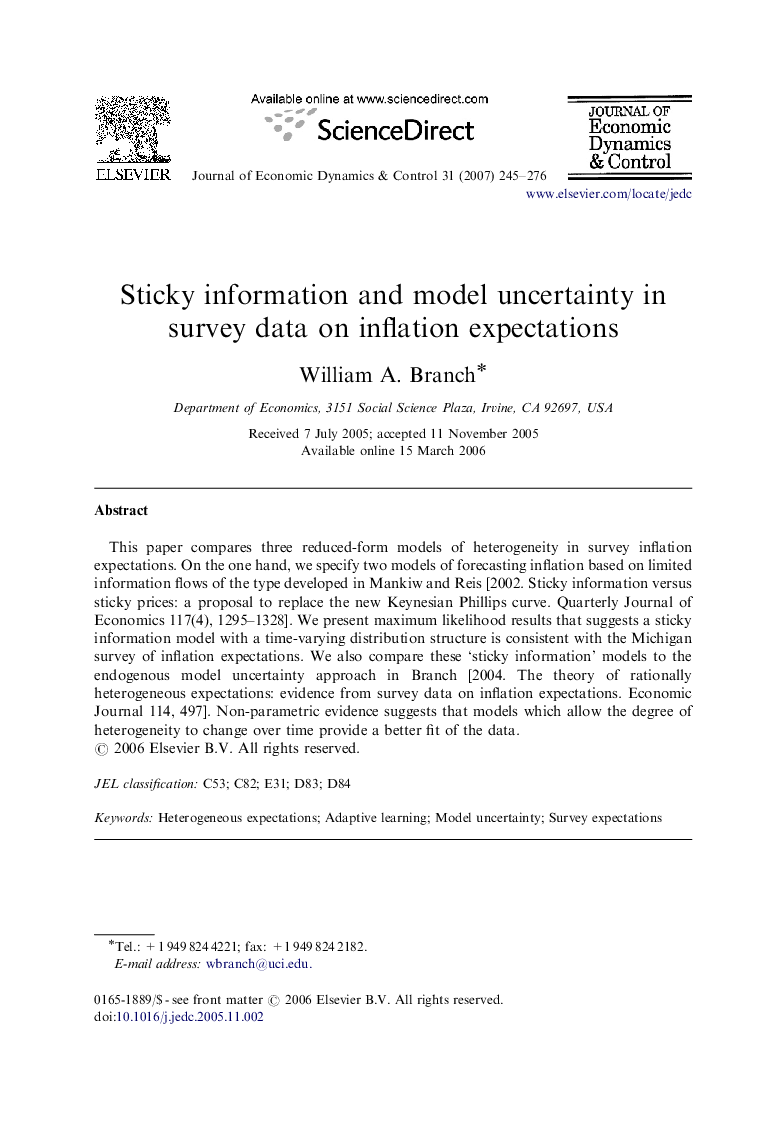| Article ID | Journal | Published Year | Pages | File Type |
|---|---|---|---|---|
| 5099362 | Journal of Economic Dynamics and Control | 2007 | 32 Pages |
Abstract
This paper compares three reduced-form models of heterogeneity in survey inflation expectations. On the one hand, we specify two models of forecasting inflation based on limited information flows of the type developed in Mankiw and Reis [2002. Sticky information versus sticky prices: a proposal to replace the new Keynesian Phillips curve. Quarterly Journal of Economics 117(4), 1295-1328]. We present maximum likelihood results that suggests a sticky information model with a time-varying distribution structure is consistent with the Michigan survey of inflation expectations. We also compare these 'sticky information' models to the endogenous model uncertainty approach in Branch [2004. The theory of rationally heterogeneous expectations: evidence from survey data on inflation expectations. Economic Journal 114, 497]. Non-parametric evidence suggests that models which allow the degree of heterogeneity to change over time provide a better fit of the data.
Keywords
Related Topics
Physical Sciences and Engineering
Mathematics
Control and Optimization
Authors
William A. Branch,
